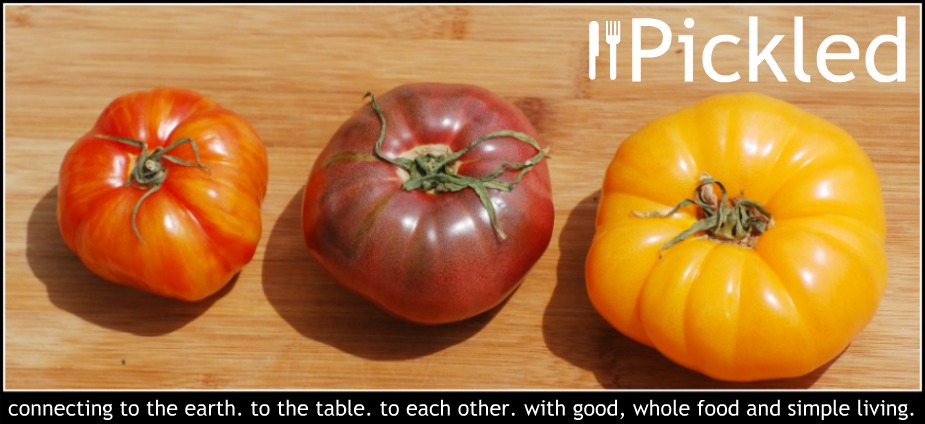This one is for all the root beer lovers out there.
And besides, how often do you hear about beer as a liver tonic?
When you combine aromatic sassafras root with the creamy vanilla sarsaparilla root, you not only get that familiar taste of root beer but you also benefit from the medicinal perks that come along with these earthy treasures. Reduce that decocted tea with some sugar into a syrup and combine with your favorite sparkling natural mineral water, and bam: you have homemade root beer! Pretty simple, right?
My friend Brian inspired this recipe. He made a really delicious brew with devil’s club that he served at Bastyr’s Herb and Food Fair this past June. This guy has a gift with herbal preparations and when he gets his hands on herbs, magical things happen. His unique devil’s club recipe is below. You may want to scale it down, but can generally follow the same steps as my recipe at the end of this post.
I swoon over homemade root beer. I’m not going to lie. The taste is nostalgic for me, especially if you combine it with vanilla bean ice cream, which is why I made my own root beer a little heavy in the sarsaparilla and added the fresh vanilla bean pod. But, don’t let that stop you from adding a scoop (or three) of ice cream for a float.
I am even more charmed by root beer knowing that this is a drink that has been made for centuries, for both flavor and its therapeutic power. I certainly hope that when I have kids, they know the rich and perfect taste of these sweet roots before they know what the heck “A&W” is.
 |
| Sassafras |
 |
| Vanilla Bean |
This is a “small beer” recipe with no alcohol content or caffeine; however, you can absolutely ferment this to make a batch of a "strong beer" with alcohol if you’d like. Sassafras root is the key ingredient that attributes to that familiar root beer flavor. Other than that, you really can tweak and play with the other ingredients to your heart’s content. Other common ingredients include: birch bark, allspice, ginger, hops, dandelion root, juniper and wintergreen.
Sadly, most root beer today has severely deviated from its true roots. Yes, pun totally intended. So just for kicks, here are the ingredients in A&W root beer you can buy off the shelf today: Carbonated water, high fructose corn syrup and/or sugar, caramel color, sodium benzoate (preservative), natural and artificial flavors.
No doubt it definitely takes more time to make root beer than to purchase it from the store, but you have to try it at least once and appreciate that these original flavors grow right outside in the woods around us.
Sassafras in particular is a species of laurel that is native to North America and commonly grows in Virginia. You can bet I’ll have some of those trees in my yard. And I’ll likely be the estranged neighbor that the town folks talk about… the one who makes beverages and such from the tree bark in her front yard. “That smiley lady is sniffing the tree bark again…”
My long time friends will likely shrug their shoulders and just love me anyway. My in-laws already think I’m pretty weird. Though if all else fails, I at least know some of my buddies in Seattle will come visit me and share a toast together on my front porch.
 |
Homemade root beer. I forgot to strain out the vanilla
bean in this batch, but the little bits on the brim of
my glass ended up being my favorite part. |
Where does the liver-loving come in? Right here.
Sarsaparilla (Smilax spp.) not only offers this vanilla cream flavor but has a high mineral content along with antibiotic and anti-inflammatory actions. The saponins in the bark also have a detoxifying function and help to cleanse the body of toxins.
Sassafras (Sassafras albidum) provides the traditional root beer flavor which you can quickly identify the moment you take a breath of the dried bark. This plant is a nutritive and restorative one that loves all your organs, but has a special affinity for the liver. It cleanses the blood, flushes toxins from the system and is used medicinally for clearing skin conditions as well as arthritic and rheumatic conditions.
Milk thistle (Silybum marianum) is added for its liver protective and potent fighting effects.
Anise seeds (Pimpinella anisum) deliver a sweet, fennely flavor and the essential oils act to support digestion, relieving gas and bloating (a carminative).
Licorice (Glycyrrhiza glabra). While not in large proportions, licorice no less contributes a subtle, natural sweetness to the mix; it also adds its soothing, anti-inflammatory qualities along with gentle support to the adrenal glands.
Lemon peel. I just like it in my root beer for a quiet lift in the backdrop.
Here’s a quick list of ingredients for Brian’s Herbal Root Beer.
2 ½ cups sassafras
1 cup devil's club
1/2 cup milk thistle seed
¼ cup anise seed
32 cups of water
6 pounds of sugar
Seltzer water
And here’s my homemade brew.
Homemade Root Beer
__________________________________________________________________________
My friend Brian is a master herbalist and makes a fantastic root beer with devil’s club. His home brew inspired me to remake my favorite soda with my own spin on it; a vanilla cream flare that reminds me of root beer floats. This is a fairly simple decoction of dried herbs, seeds, roots and sugar that can be made on the stove top. Combine this strong syrup with sparkling natural mineral water and it serves as a familiar treat as well as a liver tonic. Enjoy!
__________________________________________________________________________
 Preparation time: 15 minutes plus 2 hours to decoct the herbs
Preparation time: 15 minutes plus 2 hours to decoct the herbs
Yields 3 cups of syrup / ~16 8 ounce servings of root beer
8 cups filtered water
1 cup sassafras bark
½ cup sarsaparilla bark
2 tablespoons milk thistle seed
1 tablespoon licorice root
1 tablespoon anise seeds
1 tablespoon dried lemon peel
1 vanilla bean pod, sliced open lengthwise
3 1/2 cups organic unbleached sugar or sucanat (or a combination of the two)
Sparkling natural mineral water such as Gerolsteiner or San Pellegrino
Combine all ingredients except sugar and mineral water into a large pot. Simmer over medium heat for 2 hours. Strain the decoction reserving the liquid and composting the used herbs. Pour the liquid back into the pot and bring it to a boil. Add the sugar and continue to cook liquid over medium heat to reduce into a strongly concentrated syrup, about 3 cups. Remove from stove and cool.
Add 2-3 tablespoons of syrup to a glass with ice along with 8 ounces of sparkling natural mineral water and serve immediately. If not serving all at once, syrup should be stored in a sealed jar in the fridge for up to 1 week and prepared right before planning to drink.
***Sugar can be adjusted to taste.
Copyright 2011, S. Nester, Original recipe
Cheers to a healthy liver while sipping on homemade beer!





































